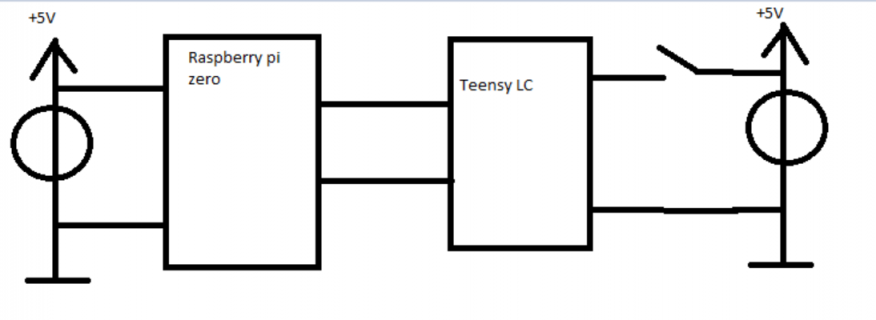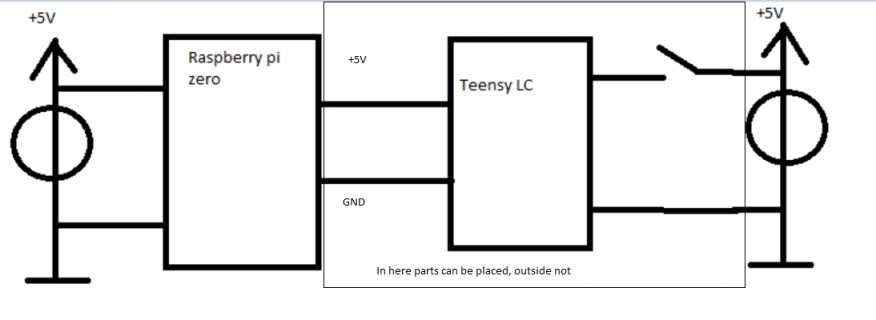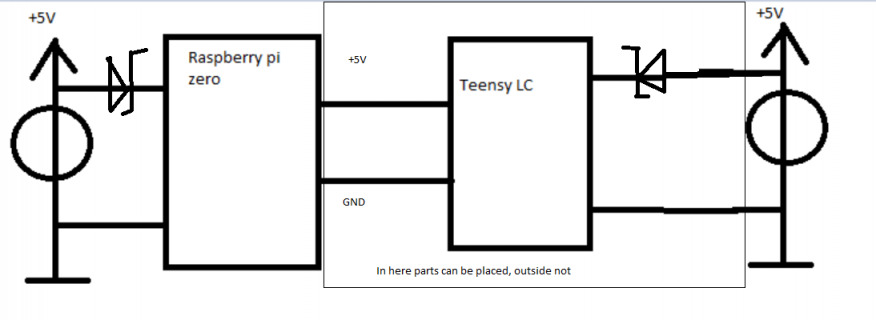Hi everyone,
I am planning to build a shield for the raspberry pi zero containing a Teensy LC which is used as a HID.
Problem is: Both have power connections, of which one of them can be turned off or both could be on.
I am not able to put any circuitry like a diode to the power source of the Raspberry pi. I can put whatever in between the Raspberry pi and the teensy and also between the teensy LC and it's power source. Right now the solution is a switch which toggles the power to the teensy.
Is there a way of doing this automatically via logic modules or transistors?
greetings
Andi
Here is a picture of the current concept which i want to replace.

I am planning to build a shield for the raspberry pi zero containing a Teensy LC which is used as a HID.
Problem is: Both have power connections, of which one of them can be turned off or both could be on.
I am not able to put any circuitry like a diode to the power source of the Raspberry pi. I can put whatever in between the Raspberry pi and the teensy and also between the teensy LC and it's power source. Right now the solution is a switch which toggles the power to the teensy.
Is there a way of doing this automatically via logic modules or transistors?
greetings
Andi
Here is a picture of the current concept which i want to replace.




